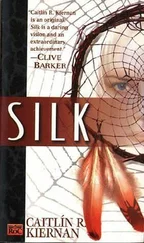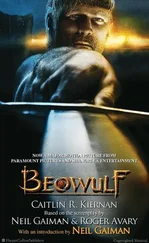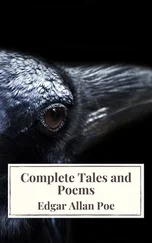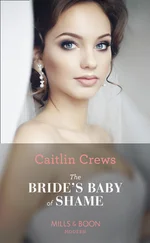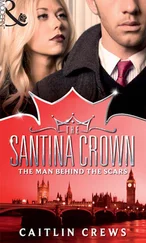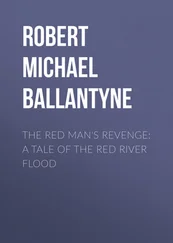Caitlin R. Kiernan - The Red Tree
Здесь есть возможность читать онлайн «Caitlin R. Kiernan - The Red Tree» весь текст электронной книги совершенно бесплатно (целиком полную версию без сокращений). В некоторых случаях можно слушать аудио, скачать через торрент в формате fb2 и присутствует краткое содержание. Жанр: Ужасы и Мистика, на английском языке. Описание произведения, (предисловие) а так же отзывы посетителей доступны на портале библиотеки ЛибКат.
- Название:The Red Tree
- Автор:
- Жанр:
- Год:неизвестен
- ISBN:нет данных
- Рейтинг книги:3 / 5. Голосов: 1
-
Избранное:Добавить в избранное
- Отзывы:
-
Ваша оценка:
- 60
- 1
- 2
- 3
- 4
- 5
The Red Tree: краткое содержание, описание и аннотация
Предлагаем к чтению аннотацию, описание, краткое содержание или предисловие (зависит от того, что написал сам автор книги «The Red Tree»). Если вы не нашли необходимую информацию о книге — напишите в комментариях, мы постараемся отыскать её.
The Red Tree — читать онлайн бесплатно полную книгу (весь текст) целиком
Ниже представлен текст книги, разбитый по страницам. Система сохранения места последней прочитанной страницы, позволяет с удобством читать онлайн бесплатно книгу «The Red Tree», без необходимости каждый раз заново искать на чём Вы остановились. Поставьте закладку, и сможете в любой момент перейти на страницу, на которой закончили чтение.
Интервал:
Закладка:
Caitlin R Kiernan
The Red Three
EDITOR’S PREFACE
I have visited the old Wight Farm and its “red tree,” there where the house squats ancient and neglected below the bogs that lie at the southern edge of Ramswool Pond. So, I have been. I have seen it for myself, but just once. Having accepted the task of editing The Red Tree for posthumous publication, it seemed, somehow, like a necessary pilgrimage. A sort of duty, required of me if I were to gain any insight at all into Sarah Crowe’s state of mind in those last months of her life. So, I went, and I even went alone.
I made the drive up from Manhattan in the spring, many months after receiving the typescript. The day was bright and crisp, a cider day in late April, the sky laid out wide and blue, and the land just beginning to go green with the first signs of spring. There was nothing the least bit foreboding about that day, but already my expectations had been colored by the pages of a suicide’s long ordeal and confession, and by the “secret history” of the Wight place that Sarah had discovered in yet another manuscript, this one having purportedly been left behind by the farmhouse’s previous tenant, a man who, as it happens, had also died there, half a decade before her arrival. The day of my visit fell, almost precisely, one year subsequent to Sarah’s arrival at the farm in April of 2008.
I will endeavor to keep this brief, as it is not my story being told here. I am, at most, that story’s reluctant caretaker.
After an early lunch in Providence with a college acquaintance I’d not seen in some time, I took Route 6 west out of the city, past North Scituate, then, at the intersection with State 102, I turned south, through Chopmist and Rockland, crossing the Ponaganset River where it spills into the great gullet of the Scituate Reservoir, then drove on to Clayville and the Plainfield Pike. At the Providence- Kent county line, I turned northwest onto Moosup Valley Road. I was unfamiliar with this part of the state — I largely still am — and allowed myself to spend an hour or so looking about a couple of cemeteries in Moosup and the old church (ca 1864–1865) now claimed by a congregation of the United Church of Christ. I also had a look about the Grange Hall and the Tyler Free Library (the latter, ca 1896–1900), before continuing on to the intersection with Barbs Hill Road, just west of town.
The road is kept up moderately well, as there are many homes and farms spread out along its length, but it does change over from asphalt to “tar-and-chip” almost immediately. The turnoff to the Wight Farm is located just past a small pond, no more than a sixth of a mile from the north end of Barbs Hill Road. Surprisingly, unlike many of the assorted side roads, driveways, and footpaths, it isn’t gated. I’d rented a Jeep Cherokee for the trip; otherwise, I’d never have made it much farther than the Blanchard place. The Blanchard family has owned the Wight Farm since 1979, and I’d cleared my visit with them the week before, explaining that I was editing Sarah Crowe’s final book and needed to see the house where she’d lived while writing it, which also happened to be the house where she’d died. Mr. Samson Blanchard, her former landlord, was neither as curious nor as suspicious as I’d expected from my scant, secondhand knowledge of the Yankees of western Rhode Island. I gave him my publisher’s contact information, but, later, I’d discover that he never even made the call. I credit this, in part, to the fact that the Blanchards suffered virtually no media attention following Sarah’s death. And, oddly (or so it seems to me), there is little evidence that local teens and other curiosity seekers have targeted the Wight Farm for nightly visitations, vandalism, or, to employ the vernacular of folklorists, “legend-tripping. [1] See the relevant entry, “legend trip,” in Jan Brunvand’s American Folklore: An Encyclopedia (Garland Reference Library of the Humanities, Vol. 1551), pp. 439-440.
”Indeed, given local traditions of ghosts, witches, and even vampires [2] Michael E. Bell, Food for the Dead: On the Trail of New England’s Vampires (2001, Carroll & Graf Publishers).
,I find the general absence of “urban myth” surrounding the farm nothing short of remarkable.
The afternoon was growing late as I bumped and bounced my way along the narrow, winding path leading south and east through the woods to the Wight place. I couldn’t drive the whole way, as the road dead-ends and there’s a turnaround less than two hundred feet from the house itself. I parked there, then crossed an alarmingly rickety wooden bridge on foot. It fords the unnamed creek that flows out of Ramswool Pond, joining other streams off towards Vaughn’s Hollow, before finally emptying into Briggs Pond after half a mile or so. Most of the trees here are oak, of one sort or another, interspersed with white pine, hickory, and red maple, and they threw long shadows across the clear, slow-moving water. The weedy banks were thick with reeking growths of skunk cabbage, the fleshy, purplish flowers open to attract bees and stoneflies. I noted the fading daylight, the late hour, and so walked quickly on to the house itself.
I wish I could say that during the two hours I spent poking about the place I felt some disquieting supernatural presence, a demonic or preternatural threat, or that I witnessed anything at all I am now unable to explain. I’m sure, if I had, this would make a far more interesting and satisfying preface to what follows. But the truth is, I didn’t. Beyond a general air of loneliness and the dim melancholy that such locales have always elicited from me, I didn’t feel much at all. I had honestly expected to find the visit unnerving, and had even considered delaying it a week until my husband could accompany me.
Mr. Blanchard had mailed me the keys to the house, and I went inside and walked through all the rooms of the house, one by one. It was still furnished with an assortment of antiques and junk, just as it had been when Sarah took up residence there. I saw the manual typewriter she’d produced her manuscript on, the same typewriter that had supposedly been used to type out the older manuscript she’d eventually found. I went up to the small attic, which, according to Sarah, was used that summer as a studio by the painter Constance Hopkins, before Hopkins returned to Los Angeles [3] It should here be noted that while I have been successful in acquiring the necessary releases allowing me to speak of Hopkins and her part in this strange affair, and to publish everything Sarah wrote about her, Ms. Hopkins has repeatedly refused my requests to be interviewed. The only published work concerning Hopkins, aside from what follows and her website, was a brief profile and review in Culver City Artscape (September 2009) following her installation at a gallery on La Cienega Boulevard last summer, a show which apparently included several of the canvases mentioned herein.
.The house was cold and dank and smelled musty, but no more or less so than any very old house built on such boggy land would after standing uninhabited for so many months.
I did not enter the enormous basement, as I’d forgotten to bring a flashlight, and Blanchard had not gone to the trouble and expense of having the power turned on just for the sake of my brief visit. However, I will say that I very much wanted to go down those flimsy stairs and see how much truth there was (or wasn’t) to what Sarah had written about the space below the house. It seems, to me, to lie very much at the heart of the matter. I stood at the basement door, and I even opened it, gazing down into that solid, formidable darkness, smelling the fetid air wafting up from below. But I am not the least bit ashamed to admit you couldn’t have paid me enough to make that descent alone. The basement is a mystery I will leave for someone else to answer, some more intrepid soul, a would-be Lara Croft or Indiana Jones.
Читать дальшеИнтервал:
Закладка:
Похожие книги на «The Red Tree»
Представляем Вашему вниманию похожие книги на «The Red Tree» списком для выбора. Мы отобрали схожую по названию и смыслу литературу в надежде предоставить читателям больше вариантов отыскать новые, интересные, ещё непрочитанные произведения.
Обсуждение, отзывы о книге «The Red Tree» и просто собственные мнения читателей. Оставьте ваши комментарии, напишите, что Вы думаете о произведении, его смысле или главных героях. Укажите что конкретно понравилось, а что нет, и почему Вы так считаете.



